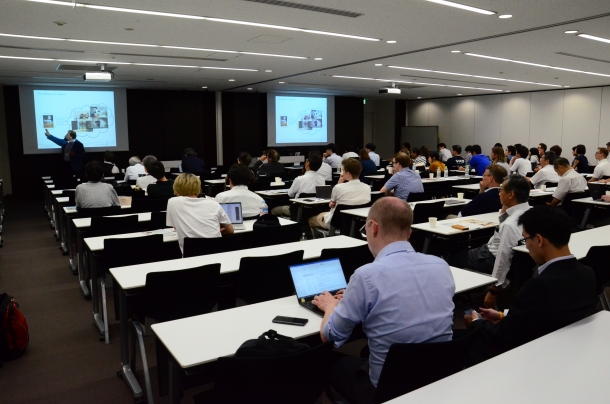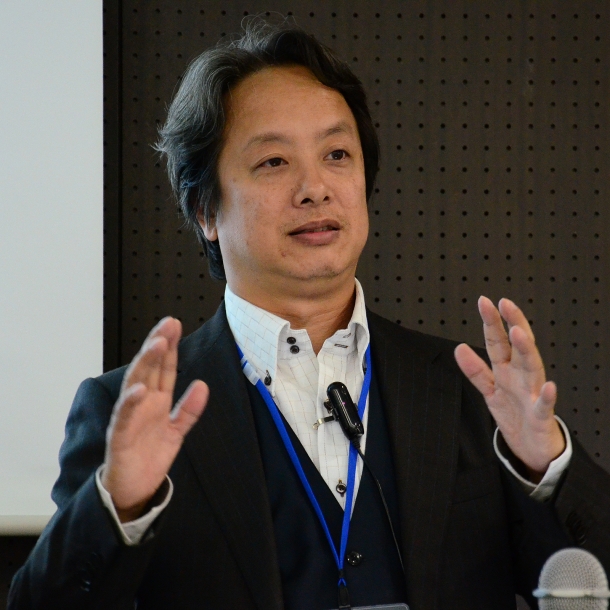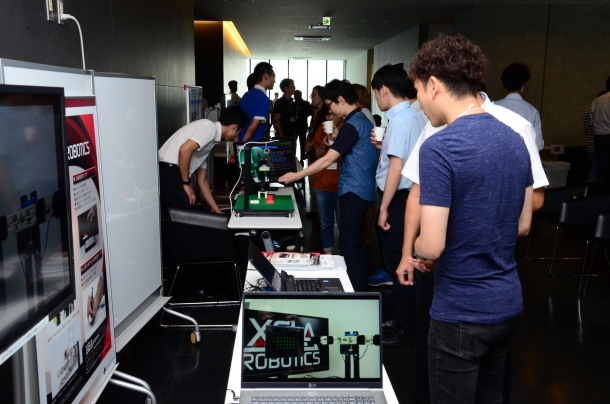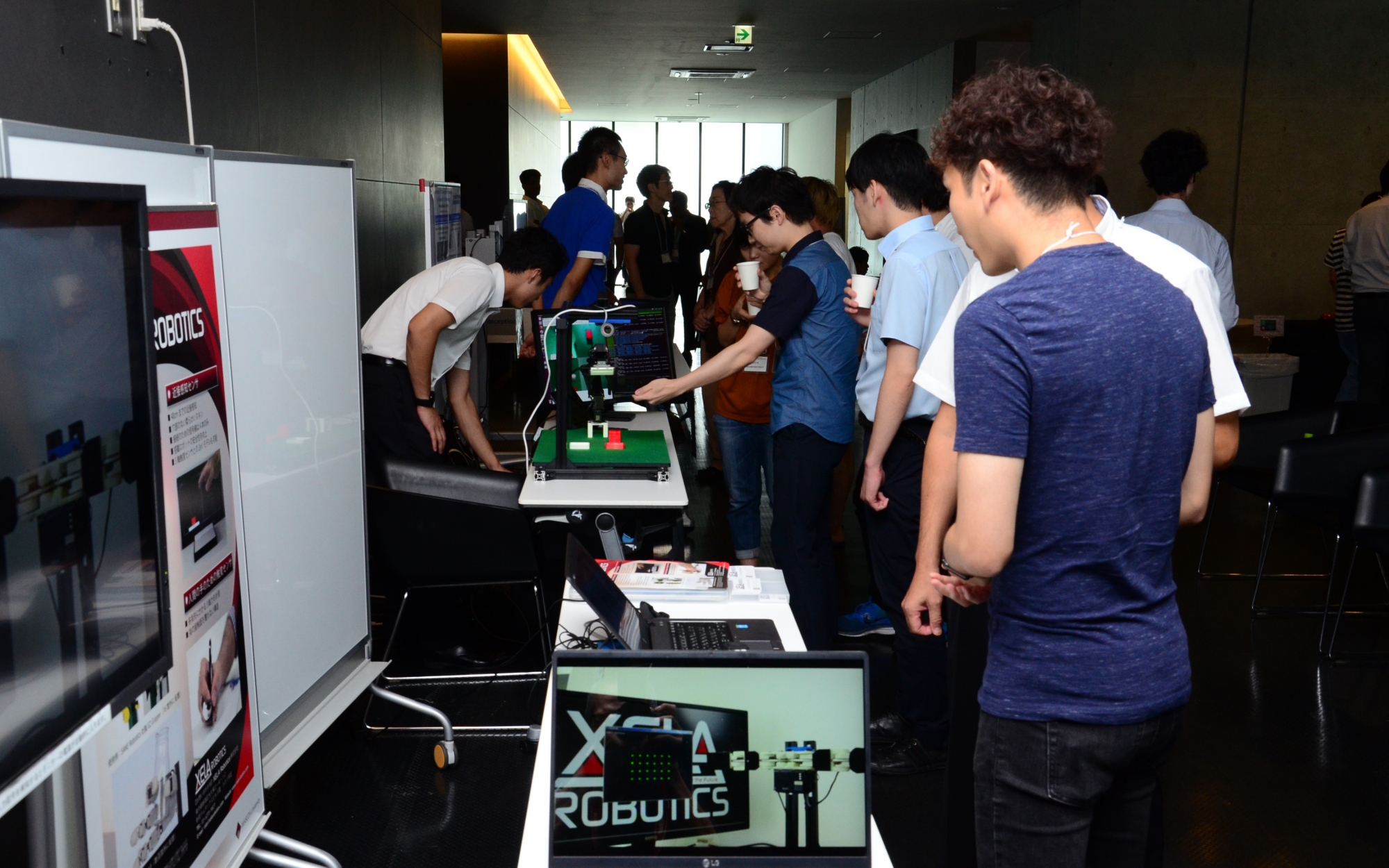Robots with cultural awareness? With the right kind of intelligence, it may be possible
Fri, Sep 13, 2019-
Tags
International Symposium on Machine Intelligence for Future Societies 2019
A recurring theme in sci-fi movies and novels, humans have been fascinated with the idea of robotics technology that is intuitively integrated into our environment. Whether it be a robot working alongside humans to cover for labor shortage or offering emotional support when in need of a companion, such technology is anticipated to countermeasure contemporary issues and help humans in various scenarios.
Organized by the ICT and Robotics Unit and the Advanced Multicore Research Institute at Waseda University, the international symposium, Machine Intelligence for Future Societies 2019, provided an audience from all over Japan of more than 100 with presentations of the latest research worldwide that may help realize this kind of technology.

“Machine intelligence is an important factor to achieve this kind of technological advancement, especially in super-aging societies like Japan,” said Professor Gordon Cheng (Technical University of Munich), a visiting professor at Waseda who was one of the main organizers of the event.
“Machines are going to be a part of us, and we need to understand exactly what its technical limitations are [because] we want to have machines that interact in a much more intelligent manner. One of the motivations of holding this symposium was to discuss the limitations we have stumbled upon so far and question whether we should continue to create machines in the way we are now.”

Professor Gordon Cheng
Professor Cheng and Professors Tetsuya Ogata (Waseda University), Laurel Riek (University of California, San Diego), Björn W. Schuller (Imperial College, London), and Michael Beetz (University of Bremen) spoke at the Nishiwaseda Campus on key topics in machine intelligence, including machine learning, healthcare robotics, and emotionally intelligent robots.
They were followed by Professors Yiannis Aloimonos (University of Maryland), Dana Kulić (Monash University), Yasuo Kuniyoshi (University of Tokyo), and Koh Hosoda (Osaka University), who gave presentations on the more physical aspects, such as human-robot interaction and soft humanoid robotics. Learn more about the guest speakers here
In his talk, Professor Cheng presented examples of highly specialized forms of intelligence from his research, for instance, a brain-controlled exoskeleton which assisted a paraplegic man kick off the 2014 World Cup opening ceremony in Brazil. The same exoskeleton has also shown that after a long-term trial, walking impaired individuals were able to recover control of their own legs again.
Despite the success of these cases, however, Professor Cheng argued that engineering smart machines will require more than methods up to date such as appearance-based learning or action based-learning, and that perhaps a new methodology or paradigm shift in thinking about intelligence as a whole will become necessary.
“Robots will need to understand the meaning behind an action, and semantic (purpose-based) learning will allow them to become more flexible and suitable to coexist with humans,” he said.

Demonstrations were held in between the symposium talks
The symposium was opened by Professor Hironori Kasahara (Senior Executive Vice President for Research and IT Promotion, Waseda University) and Dr. Hideyuki Tokuda (President, National Institute of Information and Communication Technology). Professor Shigeki Sugano (Leader of ICT and Robotics Unit, Waseda University) closed the event.
In the opening address, Professor Kasahara touched upon how Waseda has a long history of integrating machine intelligence and robotics research, which started in the 1970s with Professor Ichiro Kato’s humanoid WABOT project. He also mentioned the current projects taking place at Waseda, namely, the medical, nursing, and assisted-living robots.
“Humanoid robotics history started at Waseda, so that becomes very special,” Professor Cheng added. “This is where the beginning of humanoid is, and this is one of the most complicated and difficult challenges in robotics.”
Lastly, Professor Cheng referred to the sessions on emotional intelligence and machines adapting to culture, pointing out that all machines should adjust and adapt to different settings. He hopes that machines will be smart enough to be able to engage in natural interaction with different people in the future.














